Ultimate Guide to Choosing Ceramic Tiles for UK Homes
Exploring the Wide Range of Ceramic Tile Options

Avoiding Steam Cleaners on Ceramic Tiles: Ceramic tiles have emerged as a fundamental element in UK households, renowned for their remarkable durability and visual appeal. The main categories available include porcelain and glazed tiles. Porcelain tiles are made from a denser type of clay and are fired at higher temperatures, which enhances their ability to resist moisture and stains. This makes them particularly advantageous in the often-damp environment of the UK. On the other hand, glazed tiles feature a glass-like finish that not only enhances their appearance but also makes cleaning easier. Their extensive variety of colours and designs allows homeowners to choose options that perfectly reflect their personal style and interior design preferences, thus adding a unique touch to any space.
Expert Recommendation: Essential Products for Daily Ceramic Tile Maintenance
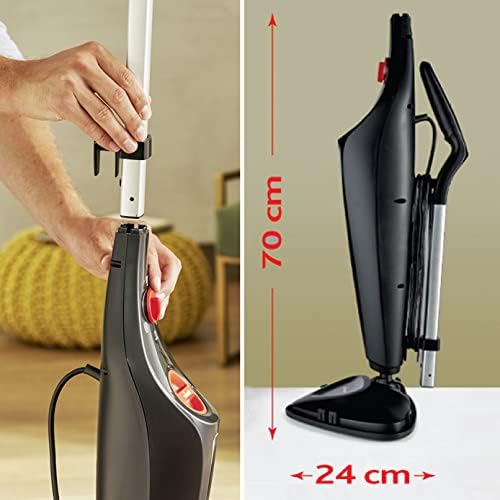
Vileda Steam PLUS Steam Cleaner
|
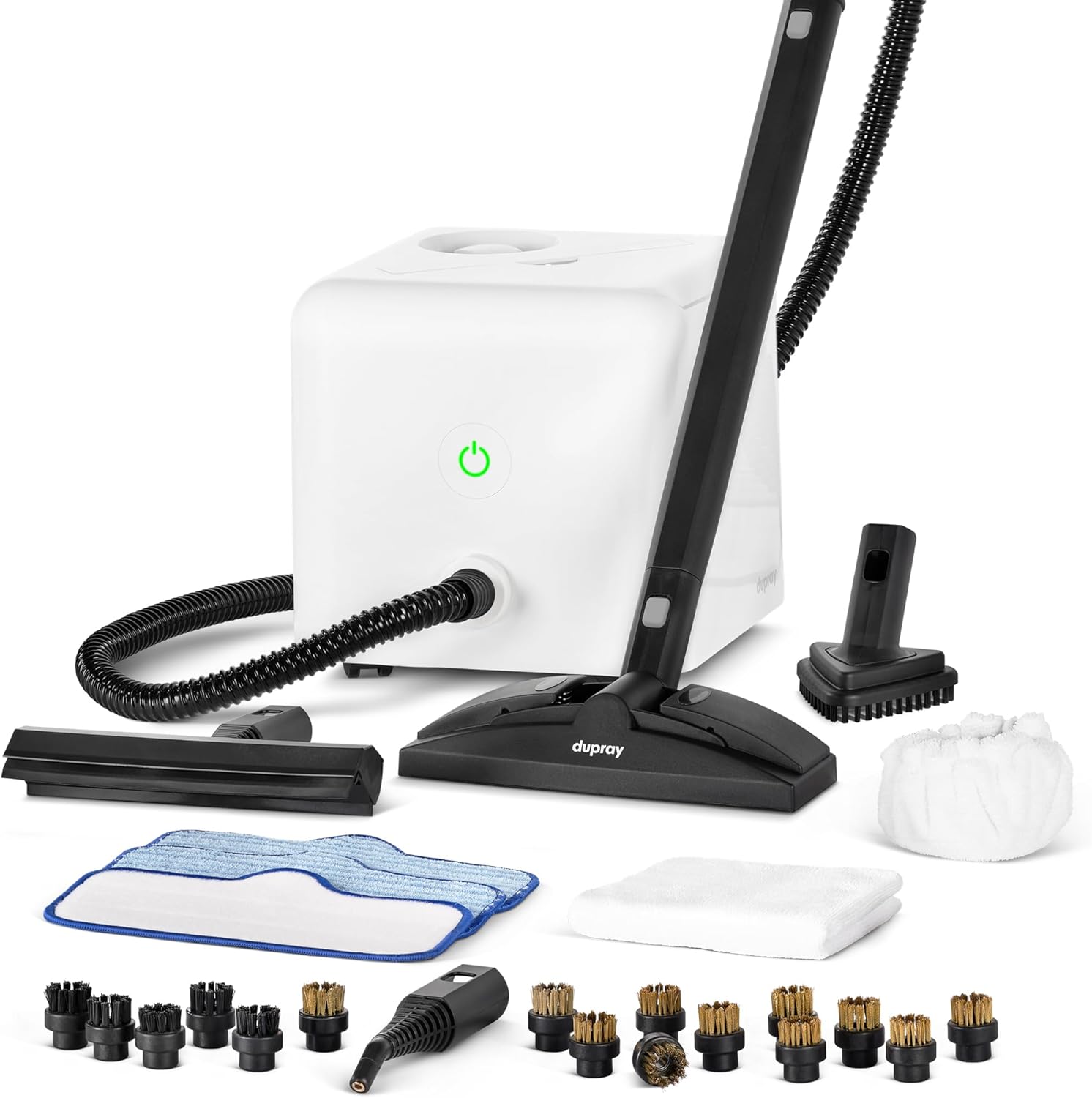
Dupray Neat Steam Cleaner
|
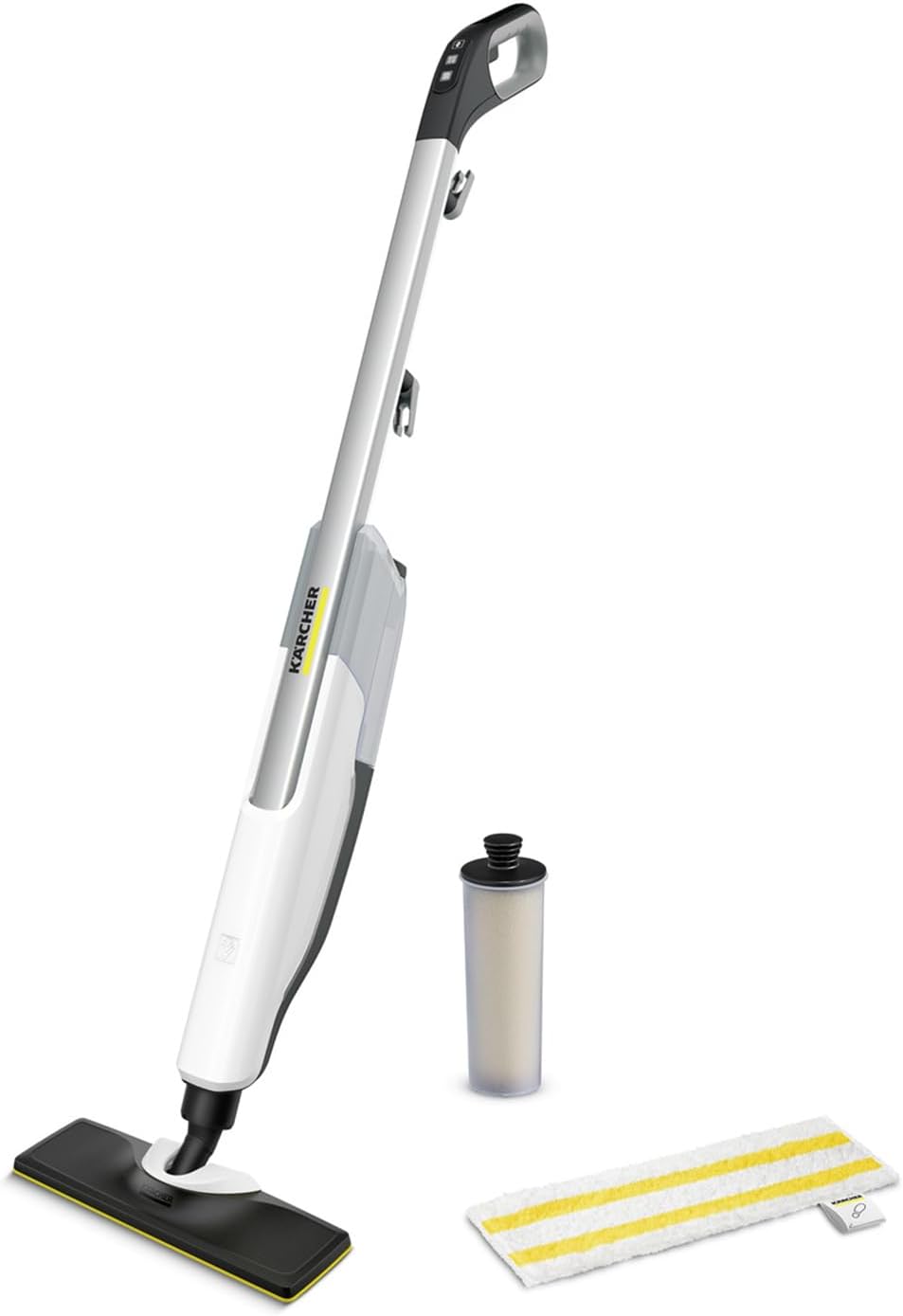
Kärcher SC 2 Upright Steam Mop
|
In addition to their aesthetic benefits, ceramic tiles offer numerous practical advantages. They can be effectively utilised throughout the home, especially in high-traffic areas such as kitchens and bathrooms, where spills and moisture are commonplace. The non-porous characteristics of glazed tiles impede the growth of mould and mildew, which is particularly crucial in the UK’s humid regions. Understanding the features of these tile varieties enables homeowners to make educated choices that suit their specific needs and lifestyle.
Key Reasons Behind the Popularity of Ceramic Tiles in UK Homes
The widespread popularity of ceramic tiles in UK bathrooms and kitchens can largely be attributed to their functionality and minimal maintenance demands. The UK’s unpredictable weather necessitates flooring solutions that can endure both moisture and temperature variations. Ceramic tiles provide a robust and dependable option for areas prone to spills and humidity, ensuring durability and resilience in challenging conditions.
Moreover, the visual attractiveness of ceramic tiles is significant. Homeowners highly value the sleek, modern aesthetic they bring to spaces, making them an ideal fit for diverse interior design styles, spanning from rustic charm to contemporary minimalism. This versatility, paired with their longevity, makes ceramic tiles a favoured choice for many households, particularly those prioritising a combination of functionality and style.
Fundamental Maintenance Strategies for Ceramic Tiles
Maintaining ceramic tiles in the UK requires a methodical approach due to the region's unique climate. Regular cleaning is essential to prevent the accumulation of grime and dirt, especially in kitchens where food preparation occurs frequently. It is advisable to sweep or vacuum the tiles consistently, followed by mopping with a damp cloth and a mild detergent for thorough cleaning, which helps preserve their immaculate condition.
Additionally, the grout that holds the tiles together can become discoloured if neglected, underscoring the importance of addressing this often-overlooked aspect of maintenance. To prevent staining and mildew, it is advisable to reseal the grout lines every few years. This not only extends the lifespan of both the grout and the tiles but also ensures they remain in excellent condition for years to come.
Important Factors to Consider When Installing Ceramic Tiles
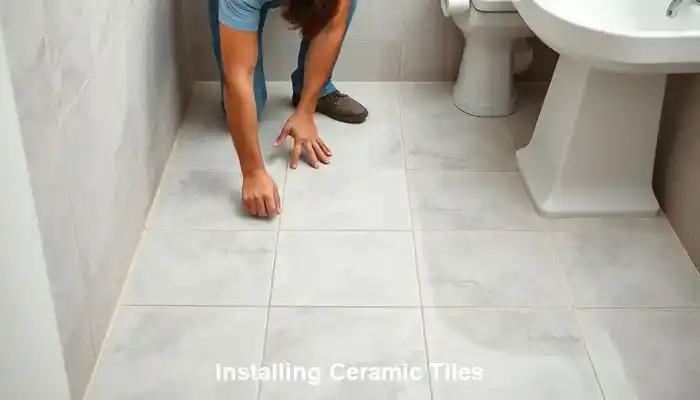
Installing ceramic tiles in UK homes requires several critical considerations that must be carefully evaluated. A well-prepared subfloor is vital to ensure durability; any imperfections can lead to cracks or movement in the tiles over time. Generally, a concrete or cement backer board is recommended as a stable foundation, particularly in areas prone to moisture, such as bathrooms and kitchens.
Equally important is selecting the appropriate adhesive. Numerous adhesives are specifically formulated for ceramic tiles, and using the correct type is crucial for ensuring the longevity of the installation. For example, a flexible adhesive is often preferred in areas subject to temperature fluctuations, as it can accommodate movement without compromising the structural integrity of the tiles.
Grasping the Principles of Steam Cleaning for Ceramic Tiles
Diving into the Functionality of Steam Cleaners
Steam cleaners utilise heat to generate steam that efficiently lifts dirt and grime from surfaces, making them a popular choice for homeowners seeking an effective cleaning solution. The high temperature of the steam works to loosen even the most stubborn stains, enabling them to be easily wiped away. This process is particularly beneficial for ceramic tiles, which often face the daily challenges of spills and stains, thus helping to maintain their pristine condition.
Comprehending the mechanics of steam cleaning is essential for those contemplating its use as a cleaning method. The steam penetrates the porous surfaces of dirt and grime, breaking their bonds with the underlying tile. This technique is not only practical but also environmentally friendly, as it predominantly relies on water rather than harsh chemicals, making it an ideal option for households with children or pets, where safety is a priority.
Maximising Temperature and Pressure Settings for Optimal Results
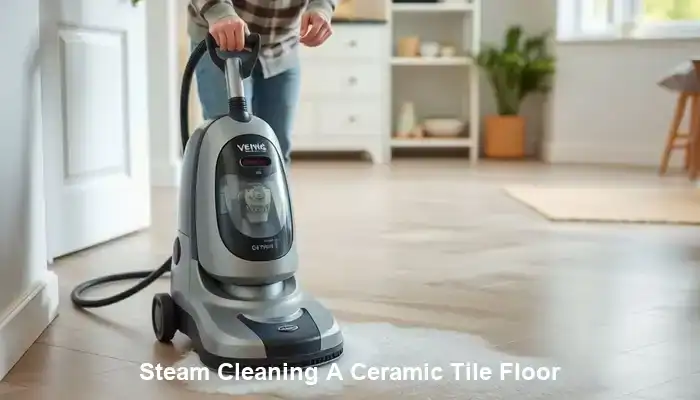
The settings of steam cleaners—namely, temperature and pressure—are crucial to their effectiveness on ceramic tiles. A steam cleaner operating at high temperatures (approximately 120°C to 150°C) is typically ideal for tackling tough stains and disinfecting surfaces. However, it is essential to ensure that the pressure settings are appropriate for ceramic tiles, as excessive pressure can cause damage to the tiles themselves.
Choosing the right settings can significantly enhance the cleaning experience while protecting the integrity of the tiles. For instance, utilising a lower pressure setting can be beneficial for older or more delicate tiles, minimising the risk of cracking or chipping. Recognising these dynamics empowers homeowners to maximise the potential of their steam cleaners for efficient cleaning without jeopardising tile quality.
Assessing the Effectiveness of Steam Cleaning
When evaluating the cleaning effectiveness of steam cleaning on ceramic tiles, it is crucial to compare it with conventional cleaning methods. Steam cleaning often surpasses standard mopping or using chemical cleaners in terms of removing stubborn stains and disinfecting surfaces. The heat produced by the steam not only lifts dirt but also eradicates germs and bacteria, thus providing a superior method for maintaining hygiene in high-traffic areas such as kitchens and bathrooms.
However, there are circumstances where steam cleaning may not be the most suitable choice. For example, older ceramic tiles with delicate finishes may be susceptible to damage from steam exposure. In such cases, traditional cleaning methods, such as employing a soft cloth and mild detergent, may be more appropriate. Understanding these distinctions can help homeowners select the most effective cleaning method tailored to their specific tile types.
Implementing Safety Measures When Using Steam Cleaners
Prioritising safety is essential when employing steam cleaners on ceramic surfaces. The high temperatures involved in steam cleaning can pose risks if proper precautions are not followed. Firstly, homeowners should always wear appropriate protective gear, including gloves and non-slip footwear, when operating a steam cleaner to prevent accidents and injuries.
Furthermore, it is prudent to keep children and pets away from the cleaning area until the surface is dry. Thoroughly reviewing the manufacturer’s instructions can also provide insights into specific safety measures tailored to the steam cleaner model in use. Ensuring that the steam cleaner is well-maintained and regularly serviced can further enhance safety and effectiveness during use.
Key Maintenance Tips for Steam Cleaners
Regular maintenance of a steam cleaner is vital for its longevity and optimal performance, especially when used frequently on ceramic tiles. Regularly checking the water reservoir for signs of limescale buildup can help prevent operational issues and extend the machine’s lifespan. Using distilled water instead of tap water can mitigate this problem, as it reduces the accumulation of mineral deposits within the device.
Cleaning the brushes and attachments after each use can also help extend the steam cleaner’s life and ensure optimal performance. This proactive maintenance approach not only boosts efficiency but also protects the ceramic tiles from potential damage caused by dirt or debris trapped in worn-out attachments, thereby preserving their aesthetic charm.
Recognising Potential Risks to Ceramic Tiles
Identifying Grout Damage Risks
While steam cleaning can be advantageous for ceramic tiles, it poses significant risks to grout, the porous material that secures tiles in place. The high temperature and pressure of steam can lead to grout degradation, causing it to crack or crumble over time. This risk is particularly heightened if the grout has not been adequately sealed or maintained.
Moreover, damaged grout can lead to various issues, including water infiltration, which can jeopardise the structural integrity of the tiles themselves. Homeowners should exercise caution when employing steam cleaning methods and follow up with regular inspections of grout lines to identify any early signs of damage, ultimately prolonging the life of both the grout and the tiles.
Preventing Tile Cracking During Cleaning
Ceramic tiles, while generally strong, are not immune to damage from steam cleaning. The phenomenon known as thermal shock occurs when there is a rapid temperature change, causing the tiles to expand and contract. If the steam cleaner’s settings are excessively high or if the tiles are already compromised from previous wear, this can result in cracking or shattering.
To reduce this risk, homeowners should avoid using steam cleaners on older or unsealed tiles, as well as those with existing cracks. Gradually introducing steam cleaning at lower temperatures can also help acclimatise the tiles to the heat, thereby reducing the likelihood of thermal shock. Understanding these risks is crucial for preserving the structural integrity of ceramic tile flooring.
Risks Associated with Sealant Degradation
Many ceramic tiles in UK homes are treated with sealants that protect their surfaces from stains and moisture. However, steam cleaning can compromise these sealants, leading to their degradation over time. The intense heat generated can break down the polymers within the sealant, resulting in a reduced lifespan of the protective layer.
Homeowners should remain vigilant regarding the condition of their sealants if they opt for steam cleaning. Regularly inspecting the tile surfaces for signs of wear and reapplying sealants as necessary can help maintain the protective barrier, ensuring the longevity and functionality of the ceramic tiles while keeping them looking their best.
Guidance from Leading UK Tile Manufacturers
Manufacturer Recommendations for Tile Care
UK tile manufacturers often provide specific guidelines on using steam cleaners on their products. Many recommend against steam cleaning, citing concerns about grout damage and sealant degradation. These manufacturers stress the importance of adhering to their instructions to maintain warranty coverage and preserve tile integrity.
For example, reputable brands such as British Ceramic Tile and Porcelanosa offer cleaning recommendations that favour traditional methods over steam cleaning. Homeowners should always consult the manufacturer’s guidelines before attempting to clean their tiles with steam to avoid inadvertently voiding warranties or causing irreversible damage to their flooring.
Insights from Steam Cleaner Manufacturers
Guidance from steam cleaner manufacturers is equally vital in determining the suitability of their products for ceramic tiles. Many reputable brands emphasise the importance of verifying the compatibility of their steam cleaners with various surfaces. Some models may feature settings specifically designed for tile surfaces, thereby facilitating safer cleaning practices.
Homeowners should thoroughly consult the user manual for their steam cleaner to determine the recommended settings and attachments for cleaning ceramic tiles. Following these guidelines can prevent damage and enhance the cleaning experience, ensuring that tiles remain in excellent condition over time.
Implications for Product Warranties
When contemplating the use of steam cleaners on ceramic tiles, it is crucial to understand the implications for product warranties. Numerous UK tile manufacturers specify that using steam cleaning methods may void any existing warranties. This consideration is especially important for homeowners who have invested in high-quality tiles and wish to protect their investment.
Before proceeding with steam cleaning, homeowners should carefully review the warranty information provided by the manufacturer. This understanding can help avoid costly repairs in the future and guide them in choosing cleaning methods that align with warranty stipulations, ultimately safeguarding their investments.
Experiences of UK Homeowners with Steam Cleaning
Successful Outcomes Reported by Homeowners
Many success stories have emerged among UK homeowners who have embraced steam cleaning for their ceramic tiles. Numerous individuals have reported that steam cleaning has revitalised their tiles, restoring their former shine and effectively removing stubborn stains without the use of harsh chemicals. Homeowners in urban areas, where pollution and dirt can accumulate more rapidly, have found steam cleaners particularly effective in maintaining tile cleanliness.
These positive experiences often highlight the convenience of steam cleaning, as many homeowners appreciate the time saved compared to traditional cleaning methods. Families with children and pets have particularly benefited from the rapid cleaning capabilities of steam cleaners, allowing them to maintain a hygienic home environment with minimal effort and time investment.
Warnings from Homeowners about Steam Cleaning
Conversely, cautionary tales abound among homeowners who have encountered negative outcomes after using steam cleaners on their ceramic tiles. Reports of grout damage and tile cracking have surfaced, often attributed to excessive heat or pressure settings during the cleaning process. Homeowners who applied steam cleaning techniques on older or unsealed tiles frequently faced more significant issues, such as discolouration and chipping.
These experiences underscore the importance of homeowners conducting thorough research and understanding their specific tile types before employing steam cleaning methods. By learning from the experiences of others, homeowners can make more informed decisions, ultimately protecting their investments and ensuring the longevity of their tiles.
Insights from Online Communities and User Reviews
UK-specific online communities have become invaluable resources for homeowners seeking advice on cleaning ceramic tiles. Forums such as Mumsnet and Houzz provide a wealth of personal experiences, ranging from enthusiastic endorsements of steam cleaners to cautionary advice regarding their use. These platforms foster a space for individuals to share insights and outcomes, contributing to a broader understanding of effective cleaning methods.
User reviews often emphasise the importance of understanding both the benefits and potential risks of steam cleaning. Homeowners often advise newcomers to approach steam cleaning with caution, particularly regarding the settings used and the condition of their tiles, to ensure a safe and effective cleaning process.
Professional Insights for Homeowners
Consulting with UK cleaning professionals can yield tailored recommendations regarding the use of steam cleaners for ceramic tiles. Experts often advocate for a cautious approach, emphasising that steam cleaning can be beneficial if executed correctly but may lead to damage if misapplied or improperly conducted.
Cleaning specialists recommend that homeowners assess the condition of their tiles before selecting a cleaning method. For instance, unsealed or older tiles may require gentler cleaning techniques, while newer, more robust tiles might withstand steam cleaning more effectively. By seeking professional guidance, homeowners can avoid common pitfalls and ensure their tiles receive the care they need.
Practical Tips for Effective Tile Cleaning
UK homeowners have developed an array of DIY tips and tricks to enhance the steam cleaning experience for ceramic tiles. Many recommend utilising steam cleaners with adjustable temperature settings, allowing for a more controlled and effective cleaning process. Additionally, using specific attachments designed for tile surfaces can significantly improve cleaning efficiency and minimise the risk of damage to the tiles.
Furthermore, combining steam cleaning with traditional techniques, such as a damp mop for final touches, can yield outstanding results. Homeowners often share their success stories about how a thoughtful approach to steam cleaning can lead to a pristine home environment without resorting to harsh chemicals, thus promoting a safer living space for all.
Investigating Alternatives to Steam Cleaning
Proven Traditional Cleaning Methods for Ceramic Tiles
For homeowners seeking effective non-steam cleaning options, traditional methods remain a reliable choice. Mopping with a mild detergent and warm water can effectively lift dirt and grime without the risks associated with steam cleaning. Microfibre mops are particularly effective, as they can trap dirt while being gentle on ceramic surfaces, providing a thorough clean without causing damage.
Additionally, using a soft-bristled brush for scrubbing grout lines can help restore their original colour without harming the surrounding tiles. While these methods may require more physical effort, they offer homeowners peace of mind, especially those with older or delicate tiles that may not respond well to steam cleaning techniques, thus ensuring the longevity of their flooring.
Choosing Chemical Cleaners for Ceramic Tiles
The UK market presents a wide array of chemical cleaners specifically formulated for ceramic tiles. These products range from all-purpose cleaners to specialised grout cleaners and stain removers. When selecting chemical cleaners, homeowners should opt for pH-balanced options that won't harm the tile or grout.
Adhering to the manufacturer’s instructions is crucial to ensure the effectiveness of these products and to prevent any potential damage to the tiles. Moreover, testing a small, inconspicuous area beforehand can help gauge how the tile responds, ensuring that homeowners can confidently clean their ceramic tiles without experiencing adverse effects.
Engaging Professional Tile Cleaning Services
For those who prefer to leave cleaning tasks to the experts, specialised tile cleaning services are readily available throughout the UK. These services utilise advanced equipment and expertise that can rejuvenate the appearance of ceramic tiles without risking damage. Professional cleaners often employ advanced techniques, such as deep cleaning and sealing, to ensure that tiles remain in exceptional condition and retain their aesthetic appeal.
Investing in professional cleaning services can save homeowners both time and effort, allowing them to enjoy cleaner, more hygienic tiles without the hassle of DIY methods. Additionally, these professionals can offer tailored advice on ongoing maintenance, ensuring that ceramic tiles remain in optimal condition for years to come.
Health and Environmental Factors in Tile Cleaning
Eco-Friendly Cleaning Alternatives
As society becomes increasingly environmentally conscious, many homeowners actively seek eco-friendly cleaning options for their ceramic tiles. Natural cleaning solutions, such as vinegar and baking soda, can effectively clean and deodorise tiles without harming the environment. These alternatives are not only safe for the planet but also suitable for households with children and pets, underscoring a commitment to safety and sustainability.
Moreover, steam cleaning itself can be viewed as an eco-friendly option, as it typically relies solely on water for cleaning, reducing the need for harsh chemicals. Homeowners should consider these alternatives, as they contribute to a cleaner home environment and promote a healthier planet overall.
Identifying Health Risks Linked to Steam Cleaning
While steam cleaning is often praised for its ability to eliminate germs, it is associated with potential health risks when misused. The intense heat generated can create steam that may be harmful if inhaled, particularly for individuals with respiratory conditions. Homeowners should ensure proper ventilation in areas during and after steam cleaning to mitigate any associated risks, thus ensuring a safe environment for all.
Additionally, excessive moisture remaining after steam cleaning can foster an environment conducive to mould growth. Homeowners must ensure that floors dry adequately post-cleaning to minimise this risk, thereby maintaining a healthy living environment for their families.
Effectiveness of Steam Cleaning in Allergen Removal
One of the significant advantages of steam cleaning is its effectiveness in removing allergens from ceramic tiles. The heat generated by steam can effectively kill dust mites, bacteria, and other allergens, significantly improving indoor air quality. For households with allergy sufferers, steam cleaning can serve as an excellent addition to regular cleaning routines, enhancing overall well-being.
Homeowners should consider incorporating steam cleaning into their overall strategy for allergen control, especially in areas where allergens tend to accumulate. This comprehensive approach can foster a healthier living environment, ultimately benefiting all household members.
Financial Implications for UK Residents
Initial Costs of Investing in Steam Cleaning Equipment
When considering a steam cleaner, UK residents should carefully evaluate the initial investment against the benefits it offers. Prices for steam cleaners can vary significantly, with basic models starting around £30 and more sophisticated units exceeding £200. This initial cost should be compared with traditional cleaning tools, which may have lower upfront expenses but typically require ongoing purchases of cleaning supplies to maintain effectiveness.
While steam cleaners may require a higher initial outlay, the long-term savings on cleaning products and time can considerably offset this expense. Users should consider their cleaning frequency and specific needs when selecting the most suitable option for their requirements, ensuring they make an informed choice.
Ongoing Costs of Maintaining Steam Cleaning Equipment
Although steam cleaners are generally low-maintenance, homeowners should consider the ongoing costs associated with them. Regularly replacing attachments and filters, as well as purchasing distilled water to prevent limescale buildup, can help avoid these expenses and should be factored into the overall budget for those contemplating steam cleaning as a long-term solution for ceramic tiles.
Additionally, homeowners should bear in mind that traditional cleaning methods also incur costs through the purchase of detergents and cleaning supplies. Evaluating these factors can help individuals determine an effective cleaning strategy for their ceramic tiles, ensuring they are not overspending on unnecessary maintenance.
Potential for Long-Term Cost Savings
The potential long-term savings associated with using a steam cleaner on ceramic tiles can be substantial. By minimising the reliance on chemical cleaners and reducing the risk of tile damage through effective cleaning methods, homeowners can extend the lifespan of their flooring. This longevity not only saves money on replacements but also contributes to maintaining the home’s overall aesthetic value.
Moreover, the time saved on cleaning tasks can prove invaluable for busy households. As steam cleaning can often be completed more quickly than traditional methods, homeowners can allocate their time to other priorities. This efficiency, combined with cost savings, makes steam cleaning a compelling option for UK residents seeking a clean home without compromising on quality.
Making Informed Choices About Cleaning Methods
Evaluating the Advantages and Disadvantages
Deciding whether to use steam cleaning on ceramic tiles necessitates a thoughtful evaluation of the associated pros and cons. On one hand, steam cleaning offers opportunities for effective stain removal and enhanced hygiene without resorting to harsh chemicals. Conversely, the potential risks to grout integrity and tile durability must also be weighed.
Homeowners should assess their specific tile types, the condition of their grout, and their cleaning habits when determining if steam cleaning is the right option for their household. By adopting a careful and informed approach, individuals can ensure they choose a cleaning method that aligns with their priorities and preserves the integrity of their ceramic tiles for the long term.
Seeking Expert Advice for Tile Maintenance
When uncertainty arises, seeking expert opinions can provide valuable insights into the most effective cleaning methods for ceramic tiles. Cleaning professionals can offer tailored advice based on the condition of the tiles, specific cleaning challenges homeowners may face, and the most effective solutions available.
This guidance can help prevent costly mistakes and ensure that homeowners adhere to best practices for maintaining their ceramic tiles. By consulting with professionals, individuals can make informed decisions that enhance both the appearance and longevity of their flooring, ultimately protecting their investment.
Experimenting with Cleaning Techniques
Homeowners may find that trial and error are integral aspects of determining the most effective cleaning method for their ceramic tiles. Experimenting with various techniques—whether steam cleaning, traditional methods, or chemical cleaners—can reveal the best solutions tailored to their specific tiles and living conditions.
Documenting outcomes and gathering feedback from family members can help refine the approach over time. This process not only fosters a deeper understanding of the unique needs of the tiles but also empowers homeowners to take control of their cleaning routines with confidence and effectiveness.
Adopting Best Practices for Tile Care
Ultimately, adopting best practices for cleaning ceramic tiles can yield optimal results. This includes adhering to manufacturer recommendations, being mindful of the specific needs of the tiles, and routinely assessing the condition of grout and sealants. By adopting a proactive approach to tile care, homeowners can ensure their ceramic tiles retain their beauty and functionality for many years to come.
Commonly Asked Questions (FAQs)
Is steam cleaning safe for all types of ceramic tiles?
Not all ceramic tiles can withstand steam cleaning. It is advisable to consult the manufacturer for specific guidelines regarding the tile type and surface finish before proceeding.
What are the primary risks associated with steam cleaning ceramic tiles?
The main risks include grout damage, tile cracking due to thermal shock, and potential degradation of sealants, which can compromise the tile’s protective layer.
How often should I steam clean my ceramic tiles?
The frequency of steam cleaning depends on usage. Generally, high-traffic areas may require cleaning every few months, while less frequently used areas can be cleaned less often.
What alternative methods can I use to clean ceramic tiles?
Effective alternatives include traditional methods, such as using a mild detergent, and employing chemical cleaners specifically formulated for professional use.
Are there environmentally friendly cleaning options available for ceramic tiles?
Yes, natural solutions such as vinegar and baking soda can clean effectively without the use of harsh chemicals, making them eco-friendly alternatives.
How can I prevent grout damage while cleaning tiles?
Regularly sealing grout lines and using gentle cleaning methods can help prevent damage to the grout. Avoid using high-pressure steam cleaning, as it can cause the material to crumble or crack.
Can steam cleaning effectively eliminate germs on ceramic tiles?
Yes, the high temperatures associated with steam cleaning can effectively kill germs, making it a hygienic choice for cleaning tiles.
What should I do if my tiles crack after steam cleaning?
If your tiles crack after a steam clean, have a professional assess the issue. Ensure you review the warranty, as it may cover repair costs.
What maintenance practices can I adopt for optimal steam cleaner performance?
Regularly clean the water reservoir, replace attachments as necessary, and utilise distilled water to reduce limescale buildup. Following the manufacturer’s maintenance guidelines is essential for optimal performance.
Is investing in a steam cleaner a worthwhile choice for my home?
Investing in a steam cleaner can be beneficial if you regularly clean ceramic tiles, as it provides effective cleaning and may save you time. However, consider your cleaning habits and specific requirements before making a decision.
The Article Should I Avoid Using a Steam Cleaner on Ceramic Tiles: A Guide was first found on https://london-stone.co.uk

